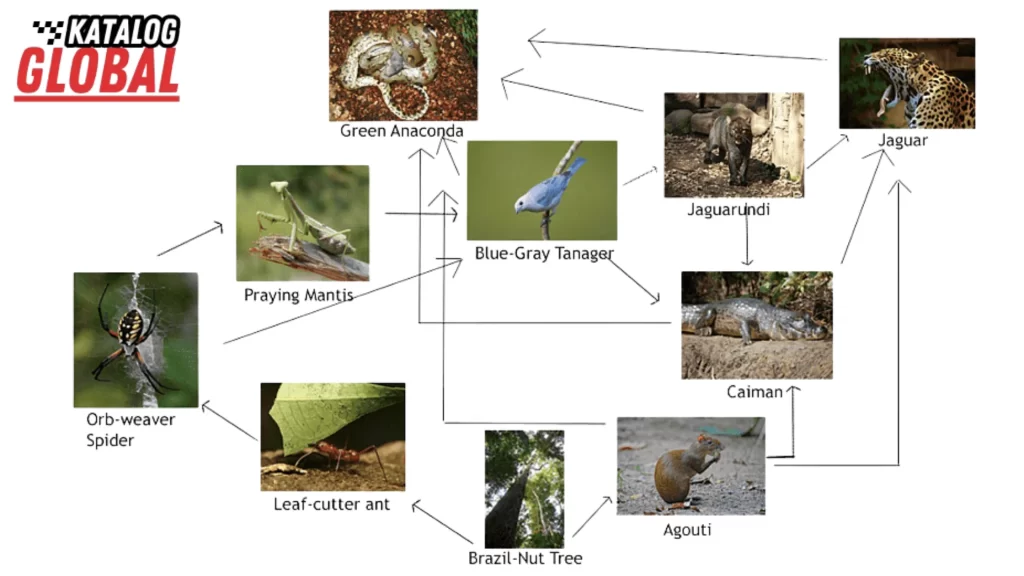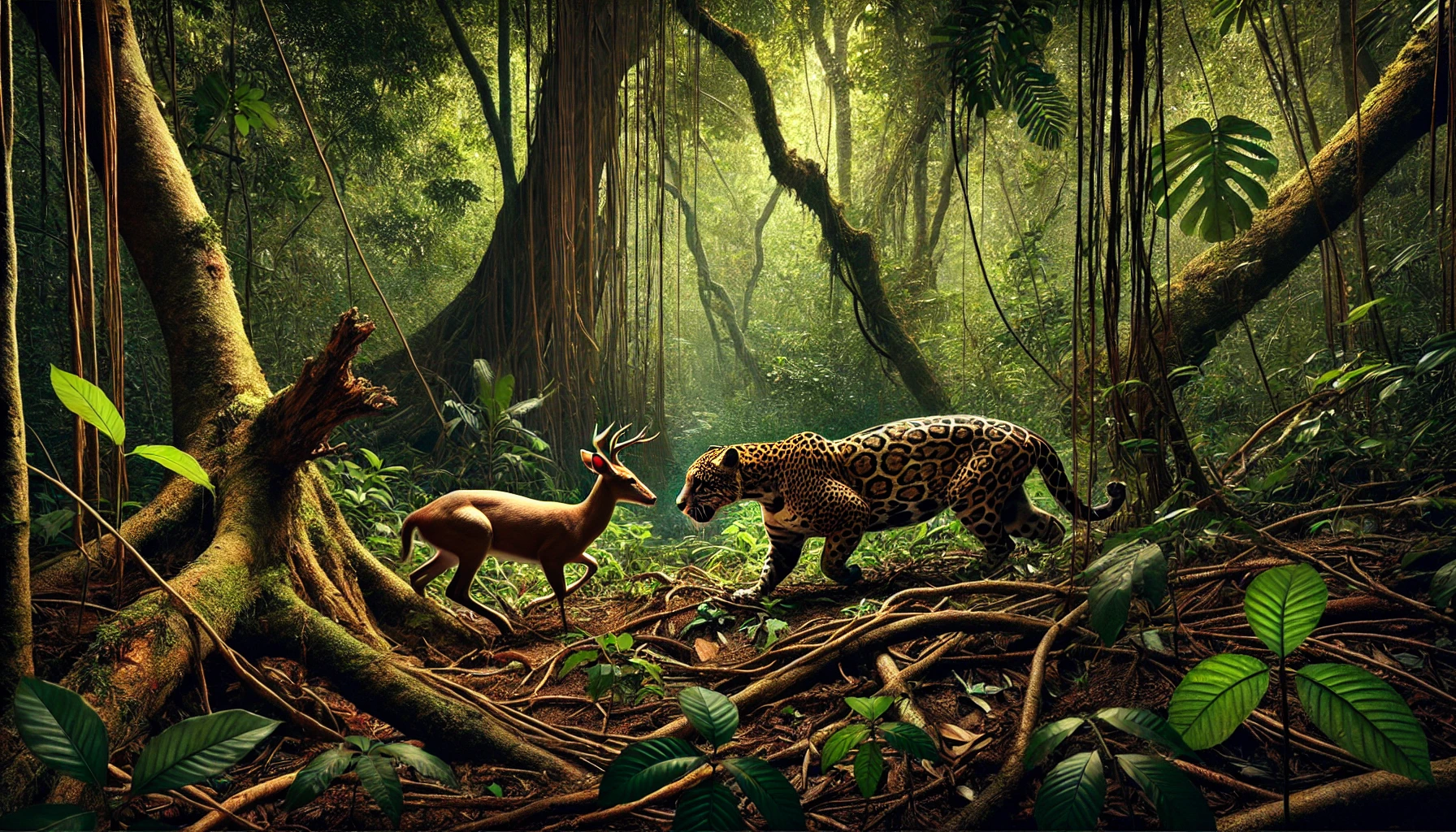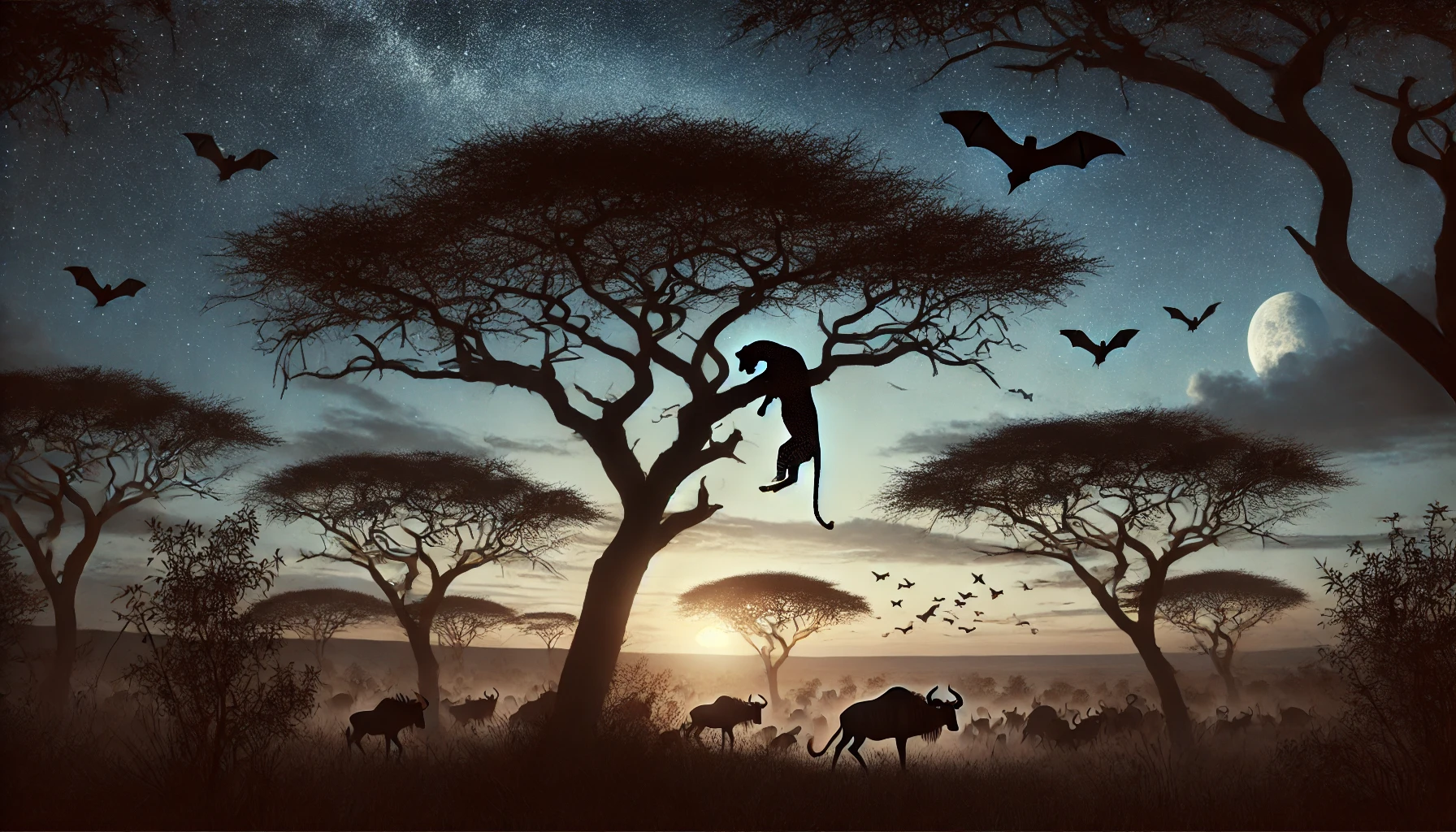Table of Contents
The tropical rainforest food web is a fascinating and intricate network of life. Every plant, animal, and insect plays a vital role in this vibrant ecosystem, creating a delicate balance that sustains life in one of the most diverse environments on Earth. Understanding it helps us appreciate nature’s interconnectedness and the hidden daily battles in this lush green world.
Understanding the Foundation of the Tropical Rainforest Food Web

The producers are at the heart of the tropical rainforest food web—plants that harness the sun’s energy to create food. These plants form the foundation of the food web, supporting a wide variety of herbivores, carnivores, and decomposers. The rainforest is home to countless species of plants, each contributing to the ecosystem in unique ways.
The Role of Primary Producers
Primary producers in the tropical rainforest include towering trees, shrubs, and various plants that capture sunlight and convert it into energy through photosynthesis. These plants provide food for herbivores like insects, birds, and small mammals. Without these primary producers, the tropical rainforest food web would collapse, leading to a domino effect throughout the ecosystem.
The Importance of Diversity Among Producers
The diversity of plant life in the tropical rainforest ensures that the herbivores always have a food source, even when some plants are not in season. This variety also helps maintain the ecosystem’s overall health, as different plants support different species of herbivores supporting various predators. The more diverse the plant life, the stronger and more resilient the food web.
The Consumers: A Vital Link in the Tropical Rainforest Food Web
Herbivores, carnivores, and omnivores are consumers in the tropical rainforest food web. Each plays a crucial role in maintaining the balance of the ecosystem by controlling population sizes and ensuring that no single species dominates the environment.
Herbivores: The Primary Consumers
Herbivores are the primary consumers of the tropical rainforest food web. These animals feed on plants’ leaves, fruits, and seeds, converting the energy stored in plants into a form that carnivores can use. Examples of herbivores in the rainforest include monkeys, insects, and birds.
The Lower and Intermediate Levels of Consumption: Carnivores and Omnivores
Carnivores and omnivores are the secondary and tertiary consumers in the tropical rainforest food web. These animals feed on herbivores and other carnivores, helping to keep the population of primary consumers in check. Predators such as jaguars, snakes, and birds of prey play a vital role in the food web by controlling the numbers of herbivores and smaller predators.
The Role of Decomposers in the Tropical Rainforest Food Web

Decomposers are often overlooked in the tropical rainforest food web but play an essential role in recycling nutrients into the ecosystem. These organisms break down dead plants and animals, returning valuable nutrients to the soil, which plants take up, completing the cycle of life.
Fungi: The Silent Recyclers
Fungi are some of the most important tropical rainforest food web decomposers. They break down organic matter, including fallen leaves, dead trees, and animal carcasses, into simpler compounds that plants can absorb. Without fungi, the rainforest would be overwhelmed with dead material, disrupting the nutrient cycle.
Insects and Microorganisms: Nature’s Clean-Up Crew
Insects and microorganisms also play a crucial role in the decomposition process. Ants, beetles, and other insects help break down larger pieces of organic matter, while bacteria and other microorganisms break down the material at the molecular level. These small but mighty organisms ensure that nutrients are continually recycled, keeping the tropical rainforest food web functioning smoothly.
Hidden Battles: Survival in the Tropical Rainforest Food Web
The tropical rainforest food web is a constant battlefield, with every creature fighting for survival. Predators hunt their prey, herbivores evade capture, and plants develop defences against being eaten. These hidden battles are crucial to the ecosystem, driving evolution and maintaining life balance.
Predator vs. Prey: The Constant Struggle
Predators and prey are locked in an eternal struggle in the tropical rainforest. Predators must catch enough food to survive, while prey animals must avoid becoming someone else’s meal. This dynamic relationship drives adaptations in both predators and prey, leading to the development of keen senses, camouflage, and other survival strategies.
Plant Defenses: The Battle Against Herbivores
Plants in the tropical rainforest are not passive participants in the food web. Many have developed defences to protect themselves from being eaten by herbivores. These defences include toxic chemicals, thorns, and tough leaves that make them less appealing or more challenging to digest. These adaptations are part of the ongoing battle between plants and the animals that feed on them.
The Impact of Human Activity on the Tropical Rainforest Food Web
Human activity is significantly impacting the tropical rainforest food web. Deforestation, climate change, and pollution disrupt the delicate balance of the ecosystem, leading to the loss of species and the collapse of food webs.
Deforestation: Breaking the Chain
Deforestation is one of the biggest threats to the tropical rainforest food web. When trees are cut down, the entire food web is affected. The loss of primary producers means less food for herbivores, affecting carnivores and decomposers. This disruption can lead to the extinction of species and the collapse of entire ecosystems.
Also Read: Savanna Food Web Secrets: Uncover the Wild Survival Tactics
The tropical rainforest food web is a complex and delicate system that supports an incredible diversity of life. Each species, from the smallest microorganism to the largest predator, plays a vital role in maintaining the balance of the ecosystem. However, human activity is threatening this delicate balance. To protect the tropical rainforest food web, we must reduce deforestation, combat climate change, and preserve the natural habitats of these incredible ecosystems.




